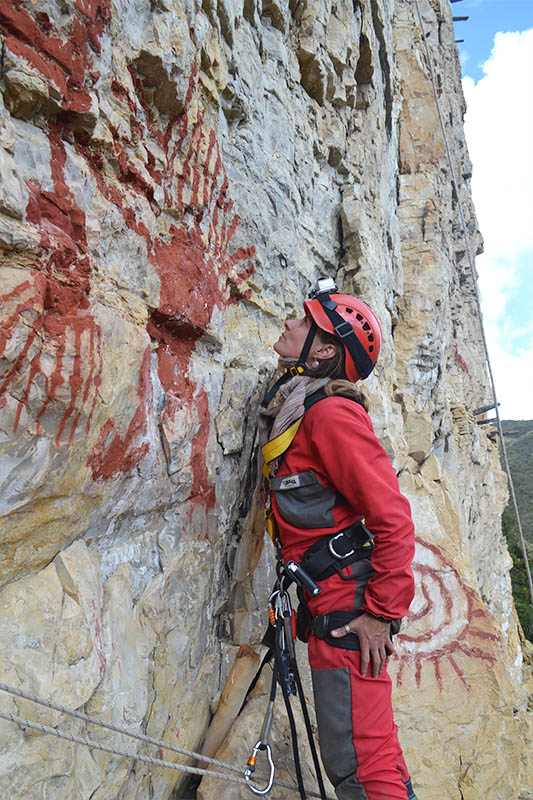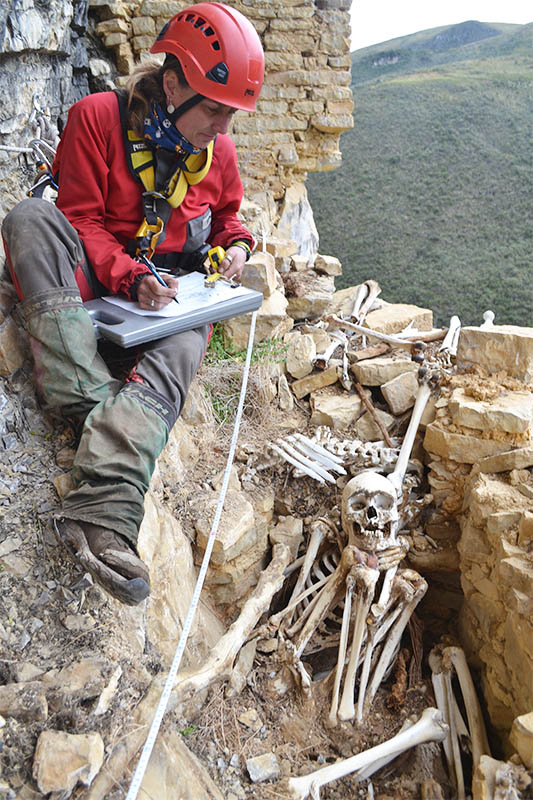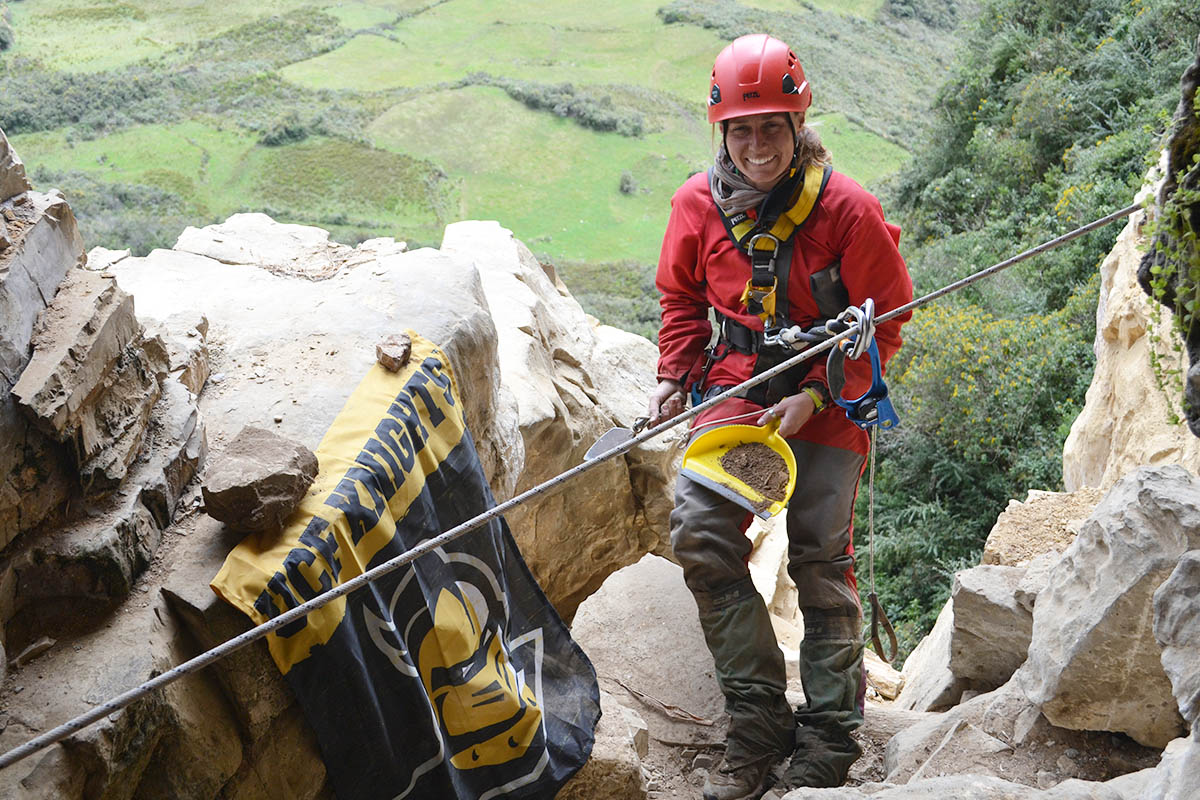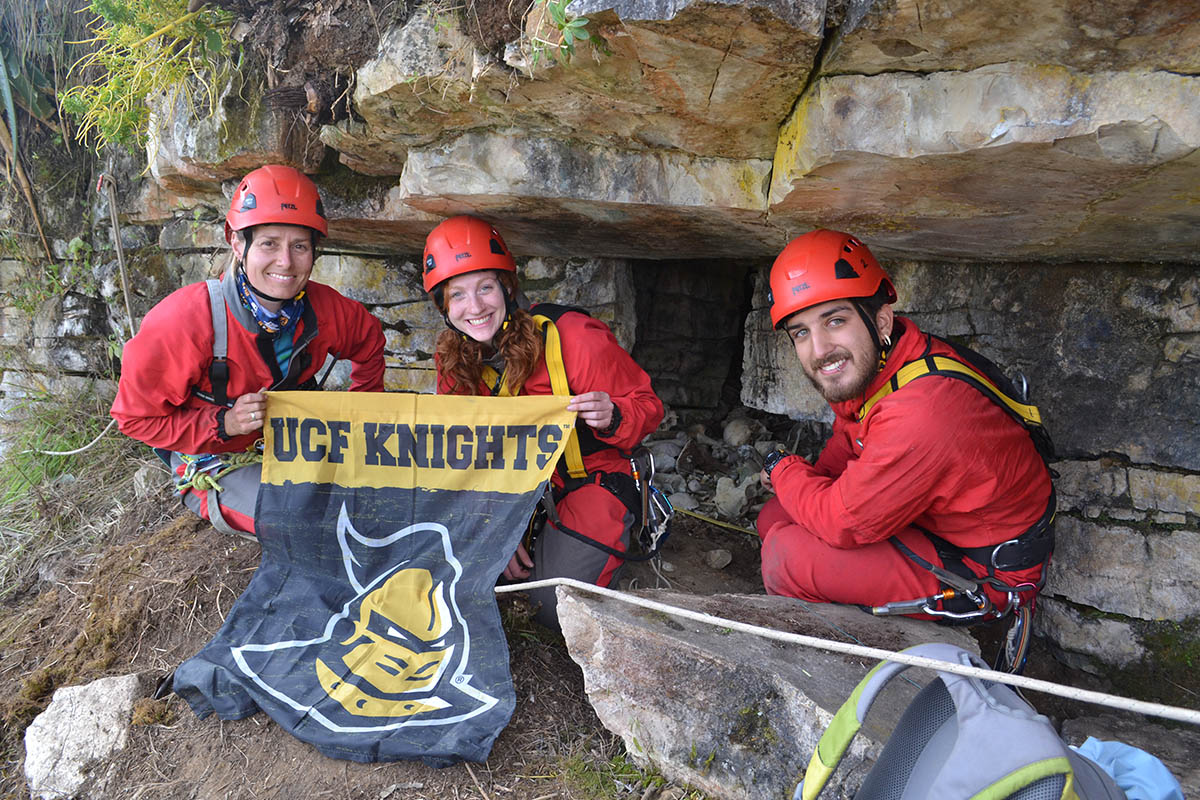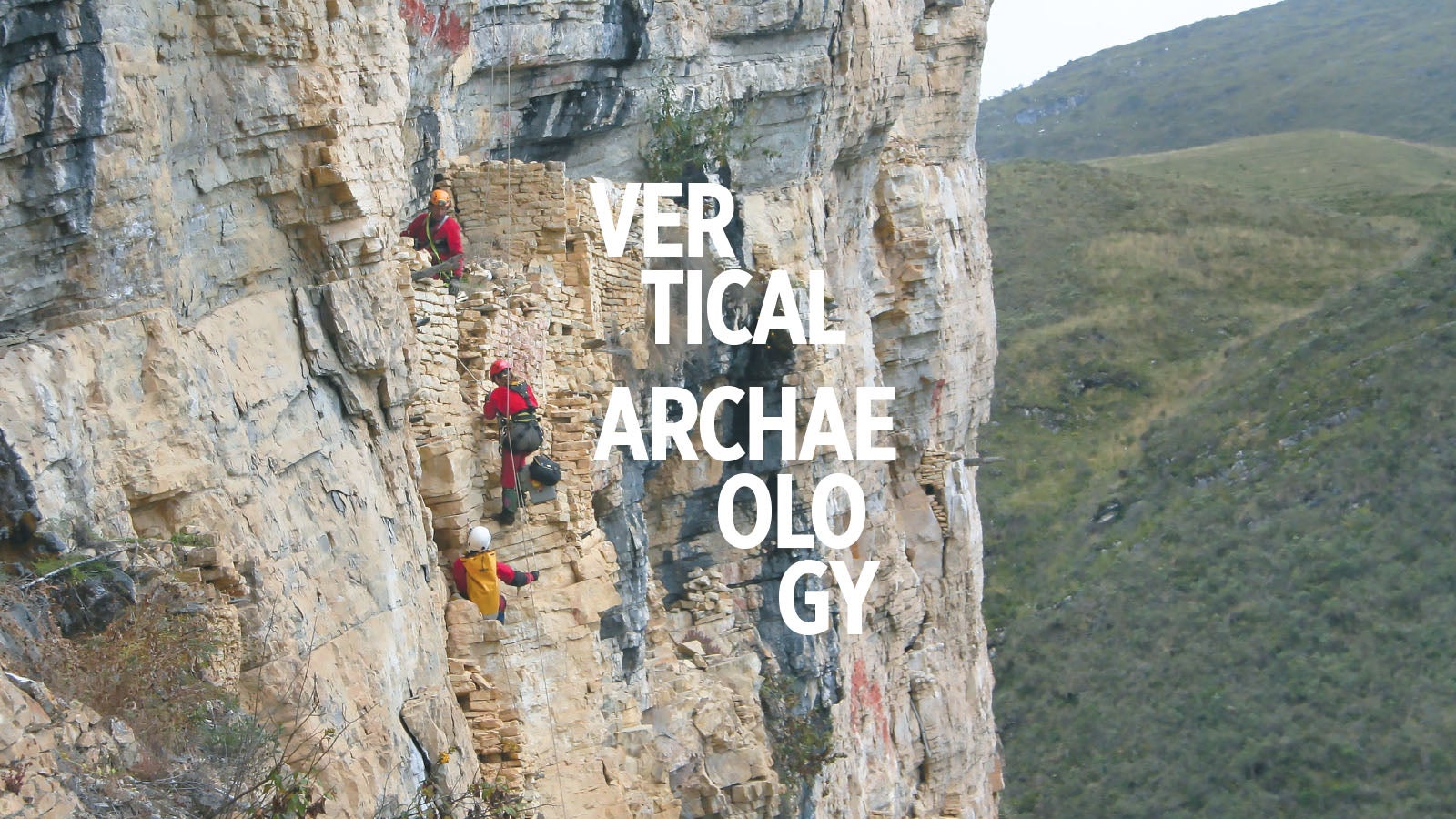
Anthropologist Searches for Answers on a Cliff in Peru
Summer 2014
More than a thousand years ago, the Chachapoya people of Peru buried their dead as close to the heavens as possible. On the eastern slope of the Andes, the ancient civilization built elaborate tombs using narrow ledges on cliffs as foundations. In this special place called La Petaca, they placed their mummified ancestors and decorated the mausoleums with colorful pictographs. Curiously, they also laid their dead to rest in adjacent caves in the mountains. UCF Assistant Professor J. Marla Toyne wanted to know more.
“The pictographs are iconic in the region, and more tourists are arriving at La Petaca,” Toyne says. “However, very little is known about the site — the number of tombs, how they were built, who was buried inside — and our investigation was the first to answer these important questions.”
But to discover these secrets, she would have to learn an entirely new set of skills that she calls “vertical archaeology.”
“Archaeology is a horizontal science — you dig down through layers of dirt — but in this case we’ve flipped it and gone vertical,” says Toyne. “We want to take pictures and make maps and drawings in an environment where we may have to be suspended.”
During a season of fieldwork in summer 2013, Toyne, graduate researcher Lori Epstein and undergraduate volunteer Armando Anzellini, ’13, trained with Project Ukhupacha, a group of cave explorers from Spain’s Jaume I University, to master climbing equipment, tie and disengage knots, and learn to rappel. But once they got to the cliff, they encountered an environment with unforeseen dangers.
“Rocks were falling constantly,” says Toyne of the delicate, crumbling shale that makes up La Petaca’s cliffs. “Every day was very intense, but my [Spanish] colleagues felt confident that we were trained enough to make these ascents, and that made me feel safe.”
Working under an excavation permit from Peru’s Ministry of Culture, Toyne and her team spent almost 30 days on the cliff, documenting the tombs and gathering skeletons and other artifacts that they processed in an improvised laboratory at a local museum for three weeks afterward. But her work in the region has just begun. Toyne will scout other Chachapoya sites this summer and lead another team of students back to La Petaca in 2015. “We identified at least 120 human-made structures used as burial places, including open chamber tombs, platforms and, surprisingly, walkways that connected groups of tombs,” Toyne says. “They likely walked along the rock ledges, cutting stone out to widen the pathways and to get stone to build. Once completed, they filled the tombs by [carrying] up bodies of family members … adults and children were buried together, including both males and females.”
For Toyne, the practice of scaling the cliffs of La Petaca provided a meaningful connection to the Chachapoya people she studies. “Nothing can really put you in the position of what the ancient people were thinking when they decided to risk their lives to build these structures,” she says. “You can’t get that by looking at a picture or a map. When you’re up there, you recognize that creating this space for the dead meant a lot to them.”
UCF anthropologist J. Marla Toyne used a system of safety ropes to reach ancient burial sites at La Petaca in the Peruvian Andes that were previously inaccessible by archeologists. "Very little is known about the site — the number of tombs, how they were built, who was buried inside," says Toyne. "Our investigation was the first to answer these important questions.”
For the La Petaca fieldwork, Toyne was assisted by graduate researcher Lori Epstein and undergraduate volunteer Armando Anzellini, ’13 (left to right). "I felt safe while I was on the cliff, and was able to work independently and document archaeological contexts without fear or hesitation," says Epstein. "l really learned the necessity of being flexible in the field."
Perched on a narrow ledge hundreds of feet above the valley floor, Toyne made detailed sketches of the Chachapoya burials. "We identified at least 120 human-made structures used as burial places, including open chamber tombs, platforms and, surprisingly, walkways that connected groups of tombs,” she says.
